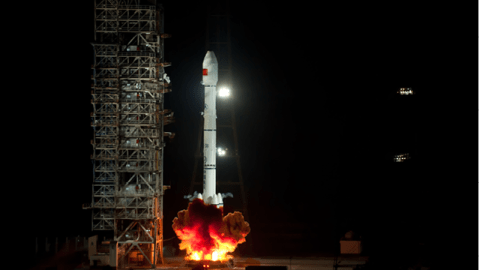From Reform to Revenue: The Impact of Amending ITAR on NewSpace Markets

NewSpace is no stranger to challenge, whether above the clouds or in legislation. One particularly ornery obstacle is the US International Traffic and Arms Regulation, commonly known as ITAR. (Please see “Public Policy” in the March 2012 issue of Thruster.) Space technologies are in many cases the step-cousins of military equipment, which then makes them the topic of national security discussions. ITAR has a well-intended foundation in keeping weapons out of the wrong hands, but it painted the NewSpace scene with a devastatingly large brush, and NSG-tracked companies have long sought to have it reformed to serve its intended purpose, without destroying businesses.
Until the reform recently enacted under the National Defense Authorization Act of Fiscal Year 2013 by President Obama, US companies had little future selling satellites abroad. This law hampered the growth of Spacecraft (the 1st of the “8-Verticals of NewSpace”) well beyond what would considered tolerable for national security concerns. (Please see “Point to Point: Europe” in the Premiere issue of Thruster.) It did this by limiting the second of the “NSG 4-Screens,” Markets. The new act is expected to be implemented by the last quarter of 2013, allowing US-based NewSpace companies to once again reach international markets. The Aerospace Industries Association estimates that $21Bln in sales during the nine years following ITAR’s coverage of space assets was lost from the industry. With only domestic opportunities for business, the Space Review estimated that the US’ global satellite market share shrunk by 33 percent from 1999, when satellites were added to ITAR, to 2008 when their study was conducted.
Before examining the implications of this long overdue reform, it is important to understand why ITAR was so gratuitously expanded in the first place. In 1996, a Long March 3B rocket launch failed in China, taking with it a satellite payload from Intelsat. The Chinese government requested and received information from the companies involved (i.e. Boeing, Space Systems/Loral, & Lockheed). The China Great Wall Industry Corporation, designer of the Long March 3B, also spent time looking for the cause of the launch failure. Of particular concern to the US, however, was this information the Chinese government had collected, and the suspicious behavior of the People’s Republic at the crash site. (Apparently, Loral staffers were not allowed near the disaster scene for 12 hours after the accident.) When they were finally allowed to pick up the pieces, it was discovered that the encryption devices on the satellite were missing.
The resulting political firestorm burned Congress and President Clinton for ineffective export laws. An earlier transfer of power over satellites from the Department of Commerce to the Department of State resulted in confusion during the launch failure, which only further complicated things. It was determined that the Chinese government had acquired sensitive military intelligence from this incident, conscientiously appropriating it from the US. Boeing, Lockheed, and Loral paid a fine of $65Mln, and momentum gathered for much more restrictive international trade laws, which culminated in the National Defense Authorization Act of Fiscal Year 1999. Commercial satellites and other space-related assets all fell under the cloak of ITAR.
Reports like those of the Space Review and the Aerospace Industries Association have reached the same conclusion for years: ITAR was like applying a full body cast to someone with a broken toe. One potent example of this is the alleged million plus dollars Bigelow Aerospace spent on meeting ITAR regulations for its Genesis missions. A table once used to keep the Genesis 1 space habitat off the ground was classified as part of the “United States Munitions List,” and consequently required security guards (whose services don’t come cheap) to protect the table. Mike Gold, director of BGLW’s Washington D.C. operations admitted that the most dangerous thing you could do was serve coffee on it, or in a worst-case scenario, even tea. Last year Virgin Galactic had to get cleared to fly non-US customers as passengers, as this too, fell under ITAR. Likewise SpaceX has struggled to do international business, even with strong US allies, without getting snagged by export regulations. Even academic institutions have debated what they can teach to international students without inadvertently breaking the law.
The reform passed in January specifically affects the satellite sector, taking commercial satellites and technologies off the list as munitions. (Please see “LargeCap Review” in the March 2013 issue of Thruster.) Most of these assets have been moved from the jurisdiction of the State Department back to the Department of Commerce, where they are controlled by the less restrictive Export Administration Regulations (EAR) instead of ITAR. Discussions will continue through multiple levels of government regarding how to more accurately classify items so that ITAR can accomplish its purpose without destroying jobs and profit margins. Much of the commercial satellite scene is focused on telecommunications, television, and other digital services that are not military in nature. Lower grade Earth-observation satellites have also been removed from ITAR. This may allow companies like DirecTV, Loral, and other NSG PTCs to compete more actively in the international markets, without fear of expensive repercussions.
These new standards are certainly beneficial to large companies, but what is more important to the growth of the industry is the anticipated positive effect on smaller players, like those on the NSG 100 and NSG OTB. A survey conducted by the Space Foundation concluded that “smaller respondent companies are more likely to feel adverse effects from ITAR than large companies.” The difference is while large companies may have been able to cope with regulations, their smaller competitors were undone by them. Congress has also become more aware of this, as evidenced by the actions of House Representatives Dana Rohrabacher and David Fite, both of whom were heavily involved in the reform. NSG spoke with Congressman Rohrabacher, and he told us “as commercial space alternatives begin to emerge in the market, we need to be careful that we don’t put so much regulatory burden on them that they become no more efficient and competitive than their government counterparts.” (Please see “Letter from the Editor” in this issue of Thruster.)
With the playing field now much more level than before, US NewSpace companies can finally engage in a market which is inherently global by nature. Before these new rules, companies like European based Thales Alenia Space highlighted the difficulty of working with US companies by promoting themselves as having “ITAR-free” products. Now only the most controversial countries, which essentially read like an OFAC’s “who’s who” (North Korea, Iran, Cuba, Syria, Sudan, and China, whose anti-satellite activity and persistent espionage constantly muddy relations) remain banned from US sales.
NSG spoke with Beau Oliver, a senior associate at Toffler Associates, an advisory firm that has worked with several NSG-tracked satellite companies, to get a better picture of the long term implications for the 1st Vertical. As someone who is familiar with emerging markets and strategic planning, Beau reinforced our understanding that the new ITAR parameters were the right step. “I do think [ITAR reform] spurs innovation. Some of the bigger companies that relied on government procurement models will have to shed old manners to meet changing market schemes… [The NewSpace industry] is going to be increasingly changing, and the ability to adapt will be the mark of a successful company.”
Only time will tell if policy reforms impact the bottom lines of 1st and 2nd Vertical NewSpace companies, but with so much activity in these global markets, changes to law may lead to positive changes to revenues in NewSpace.
Caleb Henry is an editorial intern with NewSpace Global and a frequent contributor to Thruster.





